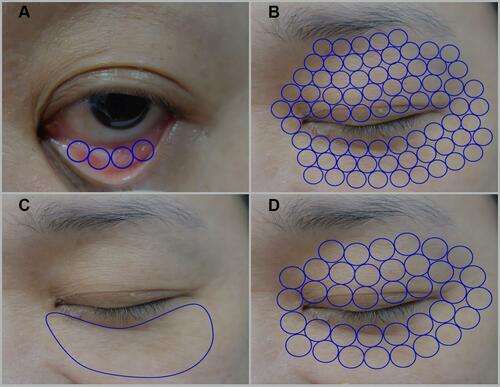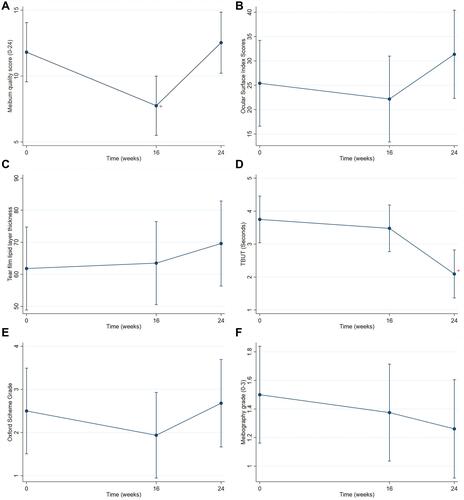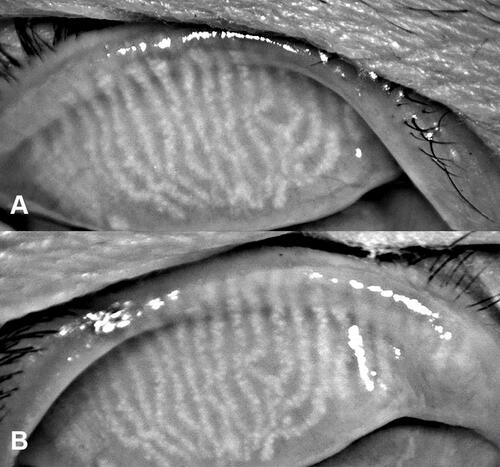Figures & data
Figure 1 Treatment areas of steps 1, 2, 3, and 4 of laser treatment. (A) Ten passes with 10 stag pulses using transconjunctival approach in step 1. (B) Three passes with three stag pulses using cutaneous approach on periorbital skin of upper and lower eyelids in step 2. (C) Five passes or until the skin temperature exceeds 40–42°C for 2–3 minutes using cutaneous approach on bulging fat in the lower eyelid in step 3. (D) Three passes using cutaneous approach on periorbital skin of upper and lower eyelids in step 4.

Table 1 Sequences and Parameters of Four-Step Laser Treatment Applied to Upper and/or Lower Eyelids
Table 2 Clinical Characteristics at Baseline and at 16-Week and 24-Week Follow-Ups
Figure 2 Estimated means with 95% confidence intervals of clinical outcomes at each visit. (A) Estimated mean meibum quality scores; + represents significant difference compared with meibum quality scores at baseline and at 24 weeks. (B) Estimated mean Ocular Surface Disease Index scores. (C) Estimated mean tear film lipid layer thicknesses. (D) Estimated mean tear break-up times (TBUTs) in seconds; + represents significant difference compared with TBUT at baseline and at 16 weeks. (E) Estimated mean Oxford scheme grades. (F) Estimated mean meibography grades.


